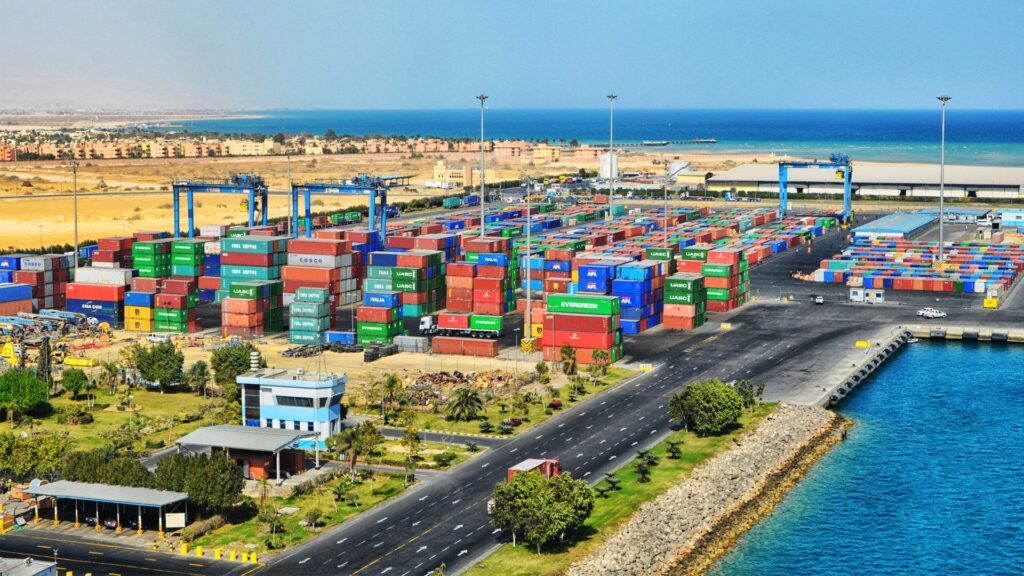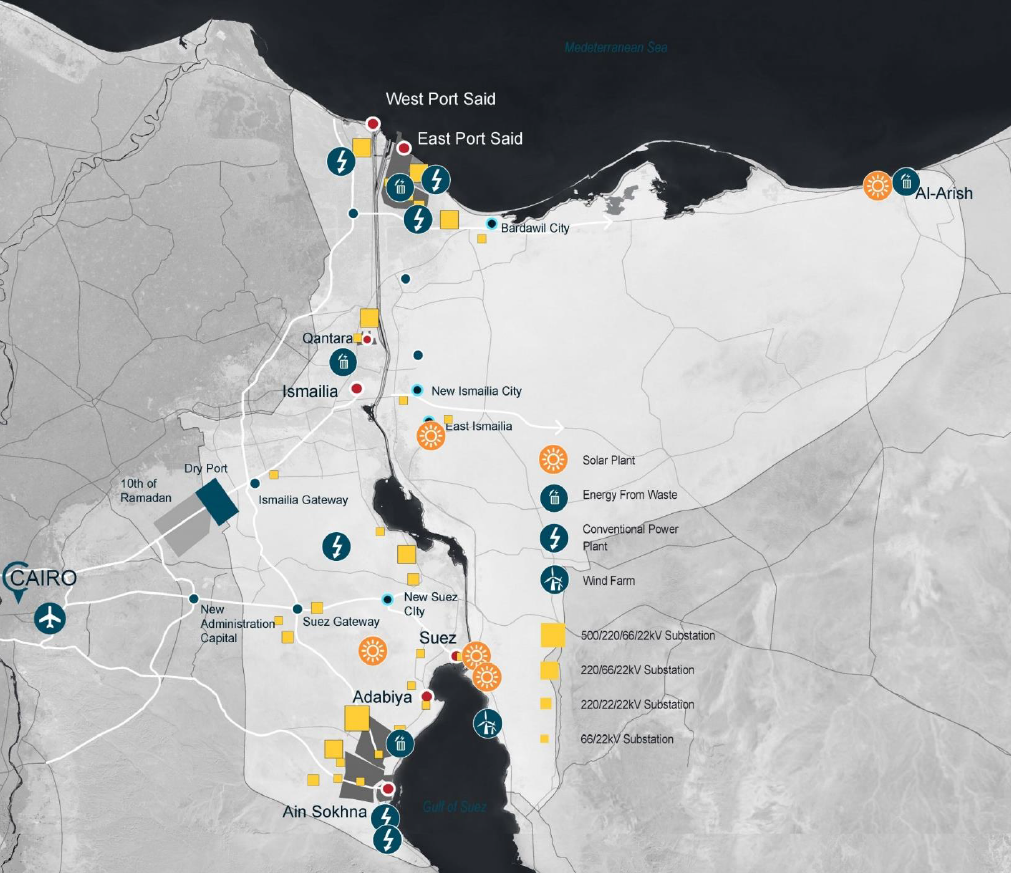Green maritime fuels next to the Suez Canal
By Julian Atchison on April 28, 2022
Masdar: developing 4 GW of electrolysis capacity

This week, UAE-based Masdar announced a two-stage project to be located in Ain Sokhna, a key industrial port in the Suez Gulf. The first stage aims to start producing renewable bunker methanol by 2026 based on electrolytic hydrogen, with a production target of 100,000 tonnes per year.
The second stage will see electrolysis capacity increased to 4 GW, producing 2.3 million tonnes per year renewable ammonia for export. The development agreement was signed between Masdar and a consortium of private & public Egyptian organisations: Hassan Allam Utilities, The General Authority for Suez Canal Economic Zone (SCZONE), New and Renewable Energy Authority, the Egyptian Electricity Transmission Company and The Sovereign Fund of Egypt.
Today’s signing is the fifth of its kind for green fuel production projects inside Sokhna zone, as SCZONE has a distinctive location and pivotal ports overlooking the Red and the Mediterranean Sea. SCZONE is qualified to be a regional Hub for ship bunkering. All the companies now are conducting feasibility studies for the projects in detail to sign and announce the actual contracts in coinciding with the COP27 climate summit next November.
Suez Canal Economic Zone (SCZONE) Chairman Yehia Zaki in Masdar’s official press release, 24 Apr 2022
These projects will build on the UAE’s and Masdar’s position as an early mover in the global hydrogen market and expand our capacity to deliver zero carbon energy solutions. As our two countries prepare to host the next two COPs, we look forward to working with our partners in Egypt to make practical advances in the energy transition that will provide significant benefits for the economy and the climate.
UAE Minister of Industry and Advanced Technology Dr Sultan bin Ahmed Al Jaber, in Masdar’s official press release, 24 Apr 2022
SCZONE inks deals for two more plants
In the first MoU between SCZONE, French organisation EDF Renewables and a series of government partners, a 350,000 tonne per year “green fuel” plant will be developed in two stages near Ain Sokhna. Similar to the Masdar announcement, the first stage features production of 140,000 tonnes of green bunker fuel, to be operational by 2026. No further details were given about the second stage or the fuel of choice.
The second MoU explicitly refers to ammonia production. The deal between SCZONE and UAE-based EMEA Power will see development of a 240,000 tonne per year green ammonia fuel plant. In the announcement, SCZONE notes EMEA’s experience in developing multi-stage mega-projects, indicating the possibility of future expansion to a significantly larger project.
Maersk commits to offtake for green fuel from SCZONE
These three plant announcements follow an agreement between SCZONE, Maersk and a consortium of Egyptian government organisations last month to explore large-scale green maritime fuel production near the Suez Canal, powered by renewable energy. The partners will finish a feasibility study before the end of this year, with Maersk already committing to off take. But – unlike Maersk’s announcement from mid-March that it had secured an end-to-end supply chain for e-methanol fuel – this new agreement does not specify a fuel molecule.

Taking all these new updates together – Masdar’s 4 GW ambition, the two smaller plant announcements, Maersk’s keen interest in green maritime fuel production – and adding in Scatec’s world-scale announcement from this March, a total of five renewable-based, maritime fuel projects are underway in the Suez Canal Economic Zone, with a particular focus on the industrial port of Ain Sokhna.
But – this is not even the full project landscape! A feasibility study is underway into a sixth project, with Petrofac working on behalf of Mediterranean Energy Partners to determine the viability of a 125,000 tonnes per year renewable ammonia export plant in Ain Sokhna. And – launched last November – Plug Power and EBIC are still working on deployment of a 100 MW electrolyser facility at EBIC’s existing ammonia plant in Ain Sokhna, with the hope of showcasing the project at this year’s COP27 conference. The Suez Canal Economic Zone, the wider Suez Gulf region and Egypt are clearly locations to watch for further ammonia developments as the year continues.
